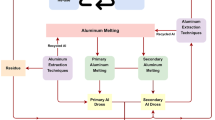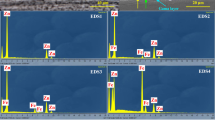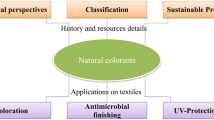Abstract
Ancient fire gilding has been a longstanding traditional Chinese craft, utilizing the unique properties of gold and mercury through chemical methods to embellish a variety of objects with layers of gold. This technique, notably efficient compared to alternative gold decoration methods, showcases the adept utilization of precious resources, highlighting the advanced technological prowess of ancient China. The objective of this study is to replicate historical silver gilding technology within a controlled laboratory environment and conduct a comprehensive analysis of the resulting silver gilded products. Subsequently, a comparative analysis with research findings related to gilded cultural relics is undertaken to confirm and enhance the technological characteristics of the gilding process. The research findings indicate that the presence of residual mercury on the gold layer of gilded products is a consequence of employing gold-mercury alloys. Furthermore, the granular microstructure observed in the gold layer is a distinct outcome of the heating process, both representing typical technical features associated with traditional gilding techniques. Moreover, the Ag-Hg transition layer between the gold layer and the substrate results from the solid solution diffusion of atoms during the gilding process, serving as a unique process feature that securely bonds the two layers. Addressing the controversy surrounding heating temperatures, experimental findings indicate that exceptionally high temperatures are not necessary for the gilding process. The golden-yellow coating on gilded products is a blend of gold and various gold amalgam alloys, achievable through solid-phase transformation within the 122–419 ℃ range or solidification of gold amalgam after melting at temperatures exceeding 419 ℃. The phase composition of the gold layer provides crucial evidence for defining the appropriate heating temperature when exploring the formation mechanism of fire gilding.












Similar content being viewed by others
Data availability
No datasets were generated or analysed during the current study.
Abbreviations
- SEM-EDS:
-
Scanning electron microscope with energy dispersive spectrometer
- BSE:
-
Backscattered electron
- XPS:
-
X-ray photoelectron spectrometer
- XRD:
-
X-ray Diffraction
- Au:
-
Gold
- Ag:
-
Silver
- Hg:
-
Mercury
References
Akitsu T (2022) Using XRD technique for model composite and related materials, in Nanotechnology in the Automotive Industry, Elsevier, 15–35. https://doi.org/10.1016/B978-0-323-90524-4.00002-5
Anheuser K (1997) The practice and characterization of historic fire gilding techniques. Archaeotechnology 49(11):58–62. https://doi.org/10.1007/s11837-997-0015-6
Berthelot M (1888) Collection des anciens alchimistes Grecs. Georges Steinheil, Paris
Cao J (1991) Traditional gilding process. Cultural Relics Protection Technology 6:74–83. 曹静楼.传统的"鎏金"工艺. 文物保护技术
Cellini B (1967) The treatises of Benvenuto Cellini on goldsmithing and sculpture. Dover Publications, New York
Cesareo R (2019) Gold, gildings, and tumbaga from the Moche tomb of the Lady of Cao: An EDXRF test for the internal ratio method. X‐Ray Spectrom 48(3):202–207. https://doi.org/10.1002/xrs.3021
Chapman N (1991) Techniques of mercury gilding in the eighteenth century. Ancient and Historic Metals. In: Scott DA, Podany J, Considine BB (eds) The Getty Conservation Institute, pp 229–238
Chudnenko K, Pal’yanova G (2013) Thermodynamic properties of Au-Hg binary solid solution. Thermochim Acta 566:175-180. https://doi.org/10.1016/j.tca.2013.05.041
Corregidor V, Alves LC, Barradas NU et al (2011) Characterization of mercury gilding art objects by external proton beam. Nucl Instrum Methods Phys Res Sect B 269(24):3049–3053. https://doi.org/10.1016/j.nimb.2011.04.070
Crabbé A, Vandendael I, Dewanckel G et al (2013) Colorando Auro: third century colouring surface treatment of fire gildings. Surf Eng 29(2):159–163. https://doi.org/10.1179/1743294412Y.0000000092
Crede L, Evans KA, Rempel KU et al (2020) Revisiting hydrocarbon phase mobilization of Au in the Au–Hg McLaughlin Mine, Geysers/Clear Lake area, California. Ore Geol Rev 117:103218. https://doi.org/10.1016/j.oregeorev.2019.103218
Crina Anca Sandu I, de Sá MH, Costa Pereira M (2011) Ancient ‘gilded’ art objects from European cultural heritage: a review on different scales of characterization. Surf Interface Anal 43(8):1134-1151. https://doi.org/10.1002/sia.3740
Darque-Ceretti E, Felder E, Aucouturier M (2011) Foil and leaf gilding on cultural artifacts; forming and adhesion. Rev Matér 16(1):540–559. https://doi.org/10.1590/S1517-70762011000100002
Deng L, Ouyang X, Jin J et al (2013) Exploiting the higher specificity of silver amalgamation: selective detection of mercury (II) by forming Ag/Hg amalgam. Anal Chem 8594–8600. https://doi.org/10.1021/ac401408m
Gao X (2009) A research of gold-plating technique- starting with gold-plated bronzed wares found in Luoyang[J]. Journal of Luoyang Normal University, (06): 23–26. 高西省. 鎏金工艺研究-从洛阳发现的战国鎏金铜器谈起. 洛阳师范学院学报. https://doi.org/10.16594/j.cnki.41-1302/g4.2009.06.028
Gard FS, Daizo MB, Santos DM et al (2019) Application of surface science techniques to study a gilded Egyptian funerary mask: a multi-analytical approach. Surf Interface Anal 51(10):1001–1017. https://doi.org/10.1002/sia.6685
Giumlia-Mair A (2020) Plating and surface treatments on ancient metalwork. Adv Archaeomater 1(1):1–26. https://doi.org/10.1016/j.aia.2020.10.001
Ingo GM, Guida G, Angelini E et al (2013) Ancient mercury-based plating methods: combined use of surface analytical techniques for the study of manufacturing process and degradation phenomena. Acc Chem Res 46(11):2365–2375. https://doi.org/10.1021/ar300232e
Ingo GM, Riccucci C, Pascucci M et al (2018) Combined use of FE-SEM+EDS, ToF-SIMS, XPS, XRD and OM for the study of ancient gilded artefacts. Appl Surf Sci 446:168–176. https://doi.org/10.1016/j.apsusc.2018.01.278
Ingo GM, Padeletti G, de Caro T et al (2007) Microchemical investigation of ancient silver and gold plated objects: coating techniques and degradation mechanisms. Strategies for Saving our Cultural Heritage 9–13. https://www.academia.edu/114630251/Microchemical_investigation_of_ancient_silver_and_gold_plated_objects_coating_techniques_and_degradation_mechanisms. Accessed 2024-03-04
Jett P (1993) A study of the gilding of Chinese Buddhist bronzes. Metal Plating Patination 193–200. https://doi.org/10.1016/B978-0-7506-1611-9.50021-2
Ji J, Ma L, Bai K et al (2019) Analysis of Bajunshoucheng gilding bronze seal of the Eastern Han dynasty in Guizhou by scanning electron microscope. J Chin Electron Microsc Soc 38(01):51–55. 纪娟, 马琳燕, 柏柯, 等. 贵州东汉巴郡守丞鎏金铜印的扫描电镜分析. 电子显微学报
Jin P, Ruan F, Yang X et al (2017) Microstructural and componential characterization of the plating technology on Chinese Han dynasty bronze fragments. Archaeometry 59(2):274-286. https://doi.org/10.1111/arcm.12246
Joshi P, Maharjan N, Anupam KC et al (2022) Characterization of gold thin films deposited by centuries-old fire-gilding method. Indian J Pure Appl Phys (IJPAP) 60(2):117–125. https://doi.org/10.56042/ijpap.v60i2.57063
khan et al, 2021khan Q, Javid MA, Rafique M et al (2021) Synthesis and mechanical properties of dental amalgam. Mater Today Proc 47(1):s33-s37. https://doi.org/10.1016/j.matpr.2020.04.672
Kobiela T, Bogdan, Duś R (2003) The influence of gas phase composition on the process of Au-Hg amalgam formation. Appl Surf Sci 78–89. https://doi.org/10.1016/S0169-4332(02)01190-X
Laskaris N, Varalis I, Tsodoulos C et al (2020) Evidence of Au-Hg gilding process in post Byzantine Ecclesiastical silverwres (Chalices) of Easterrn Thessaly by PXRF. Mediterr Archaeol Archaeom 20(1):189–203. https://doi.org/10.5281/zenodo.3605677
Liang X (1990) The traditional gold-plating technology in China. Materials Production 23(1–2):8, 83–86. 梁旭东.中国传统的鎏金技术. 材料保护. CNKI:SUN:CLBH.0.1990-Z1-025
Lim SK, Kang SG (1992) A study on the gold film coated on the ancient gilt bronze. Journal of the Korean Conservation Science for Cultural Properties 1(1):60–79. https://koreascience.kr/article/JAKO199217033618457.pdf. Accessed 2022-10-08
Lins PA, Oddy WA (1975) The origins of mercury gilding. J Archaeol Sci 2(4):365–373. https://doi.org/10.1016/0305-4403(75)90007-2
Liu Y, Yang J, Tan P (2019) Some new thoughts about the technology of “Cuojinyin”. Sci Conserv Archaeol 031(004):75–86. 刘艳, 杨军昌, 谭盼盼. "错金银"新论. 文物保护与考古科学. https://doi.org/10.16334/j.cnki.cn31-1652/k.2019.04.010
Margreiter R, Baumann J, Mantouvalou I et al (2022) Investigations on fire-gilding. Archaeometry 6(64):1465–1478. https://doi.org/10.1111/arcm.12797
Mead HW, Birchenall CE (1957) Diffusion in gold and Au-Ag alloys. JOM 9(7):874–877. https://doi.org/10.1007/BF03397933
Mello E, Di Paola E, Marra G et al (2021) Advances in materials and technological characterization of Lorenzo Ghiberti’s Gates of Paradise. Eur Phys J Plus 136(8):1–11. https://doi.org/10.1140/epjp/s13360-021-01851-9
Nishio-Hamane D, Tanaka T, Minakawa T (2018) Aurihydrargyrumite, a natural Au6Hg5 phase from Japan. Minerals 8(9):415–423. https://doi.org/10.3390/min8090415
Oddy A (1993) Gilding of metals in the old world[J]. Metal Plating Patination 3:171–181. https://doi.org/10.1016/B978-0-7506-1611-9.50019-4
Okamoto H, Massalski TB (1989) The Au-Hg (Gold-Mercury) system. Bull Alloy Phase Diagr 10(1):50–58. https://doi.org/10.1007/BF02882176
Ottenwelter E, Josse C, Proietti A et al (2022) Fire gilding investigation on early medieval copper-based jewellery by focused ion beam (FIB) on FEG-SEM. J Archaeol Sci Rep 46:103602. https://doi.org/10.1016/j.jasrep.2022.103602
Pinnel MR (1979) Diffusion-related behaviour of gold in thin film systems. Gold Bull 12:62-71. https://doi.org/10.1007/BF03216542
Shao Y, Xuan Lu, Wenbin Fu et al (2023b) Technical characteristics and coating formation mechanism of gilded silver products unearthed from the Consort Tomb of Emperor Shengzong of the Liao Dynasty. Archaeol Anthropol Sci. https://doi.org/10.1007/s12520-023-01740-5
Shao Y, Jiang F, Yang J et al (2023a) Formation mechanism of copper-gilded coronet ornaments excavated from a Sui or early Tang tomb situated in Xi’an, Shaanxi. Herit Sci 11(1). https://doi.org/10.1186/s40494-023-01000-8
Singh V, Singh S (2019) Mercury-amalgam gilding in Nepal: a study of traditional material and technique. In METAL 2016-Interim Meeting of the ICOM-CC Metals Working Group September 26–30, New Delhi India
Wang H (1984) Research on gilding technology. Palace Museum J 王海文. 鎏金工艺考. 故宫博物院院刊
Acknowledgements
We are grateful to Ms. Juan Ji from Shaanxi Institute for the Preservation of Cultural Heritage, for the support and help on SEM-EDS. We extend special appreciation to Zijun Dong for providing valuable suggestions during the experiment. Additionally, we would like to convey our special thanks to Lifeng Jiang for offering insightful suggestions on the manuscript.
Funding
The Project Supported by
1. The Humanities and Social Sciences Foundation of Ministry of Education of China (No. 21YJCZH050).
2. Natural Science Basic Research Program of Shaanxi (Program No. 2021JQ105).
Author information
Authors and Affiliations
Contributions
Yanbing Shao: Methodology, Validation, Investigation, Data analyses, Writing—original draft, Writing—review & editing. Fengrui Jiang: Methodology, Project administration. Junchang Yang: Project administration. All authors read and approved the final manuscript.
Corresponding author
Ethics declarations
Competing interests
The authors declare no competing interests.
Consent to participate
Not applicable.
Additional information
Publisher's Note
Springer Nature remains neutral with regard to jurisdictional claims in published maps and institutional affiliations.
Rights and permissions
Springer Nature or its licensor (e.g. a society or other partner) holds exclusive rights to this article under a publishing agreement with the author(s) or other rightsholder(s); author self-archiving of the accepted manuscript version of this article is solely governed by the terms of such publishing agreement and applicable law.
About this article
Cite this article
Shao, Y., Jiang, F. & Yang, J. Process and technical characteristics of traditional gilding technology on silver: experimental replication and analysis of silver gilded products. Archaeol Anthropol Sci 16, 51 (2024). https://doi.org/10.1007/s12520-024-01958-x
Received:
Accepted:
Published:
DOI: https://doi.org/10.1007/s12520-024-01958-x




